Factors To Consider When Hiring A Garden Soil Rotavator
Ready to get started with breaking up your ground ready for levelling or sowing? Well, before you start, you should consider whether the equipment you are using is suitable for the task. A walk-behind garden soil rotavator is one of the most popular machines that many DIYers and small gardening businesses use to complete such tasks. In this article, we are going to cover everything you need to consider when hiring a garden soil rotovator, the common questions around them, and why hiring one could be a suitable option to help with your project. Let’s jump straight into understanding what a soil rotovator is to start.
What is a soil rotovator?
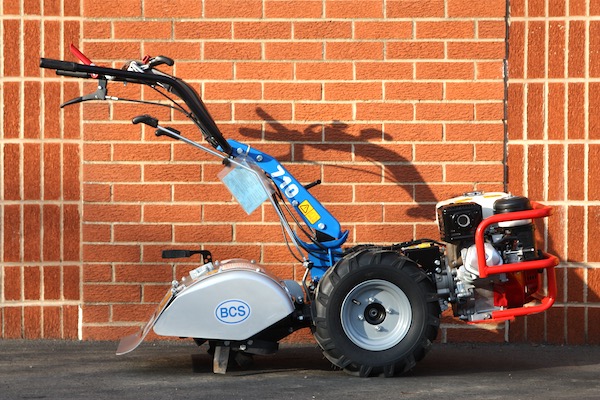
Soil rotovators are powerful gardening tools that are used to break up, aerate and level your ground. They achieve this with their rotating blades or tines that churn through the surface as the machine passes over the working area. Normally, to a working depth of around 230mm. Walk-behind rotovators are usually powered by a small petrol engine which provides the necessary force to handle most garden tasks.
Only one person can operate the machine at one time, while walking behind or beside it as it moves. The engine not only powers the rotating blades but also the wheels of the machine at the same time. Meaning the equipment will pull itself along without any effort. When looking to hire a soil rotovator, you will encounter several different designs and configurations, however, they all should work similarly. Here is a general make-up of their components:
- Blades or tines
- Petrol power source
- Depth adjustment
- Operator’s handlebars
- Gear levers
- Driven wheels
Blades or tines
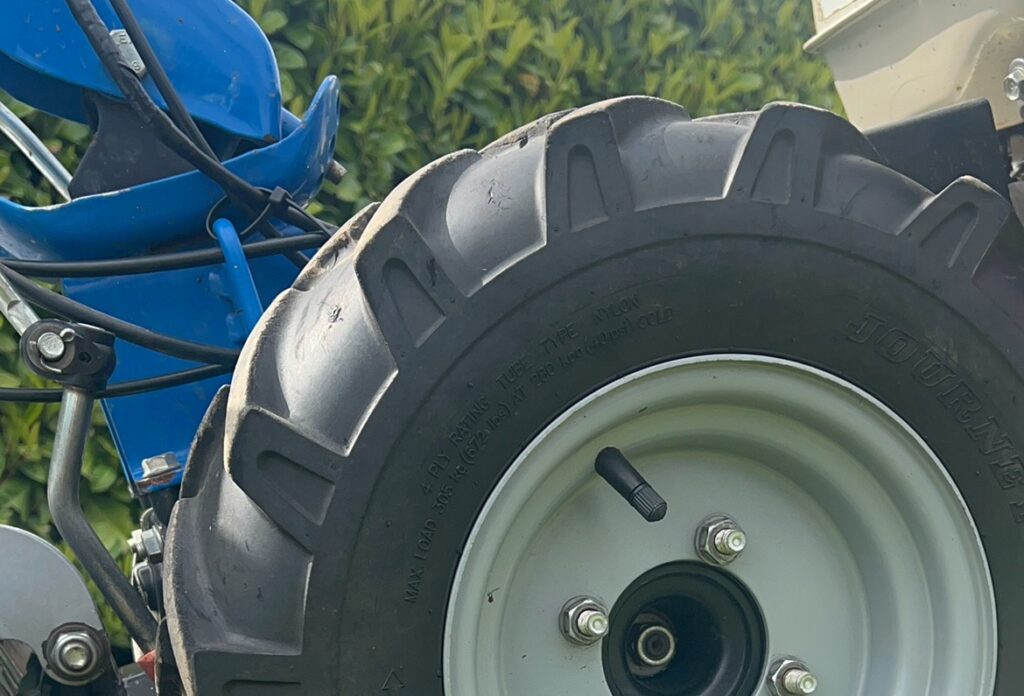
These are the components that churn up the soil during cultivation. Their design allows them to pull through the soil surface with relative ease. More compact surfaces may require multiple passes at different depths to achieve your desired outcome.
Petrol power source
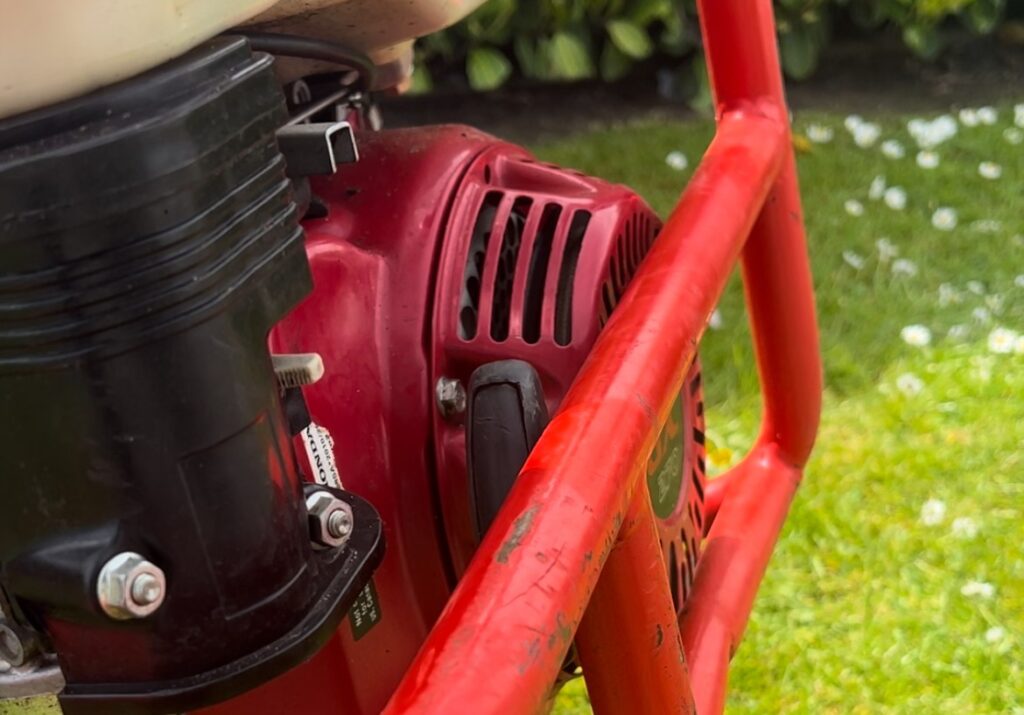
The engine of the machine sits at the front of the soil rotovator. This is often a petrol-powered motor, which is responsible for the rotation of the blades and moving machine’s wheels.
Depth adjustment
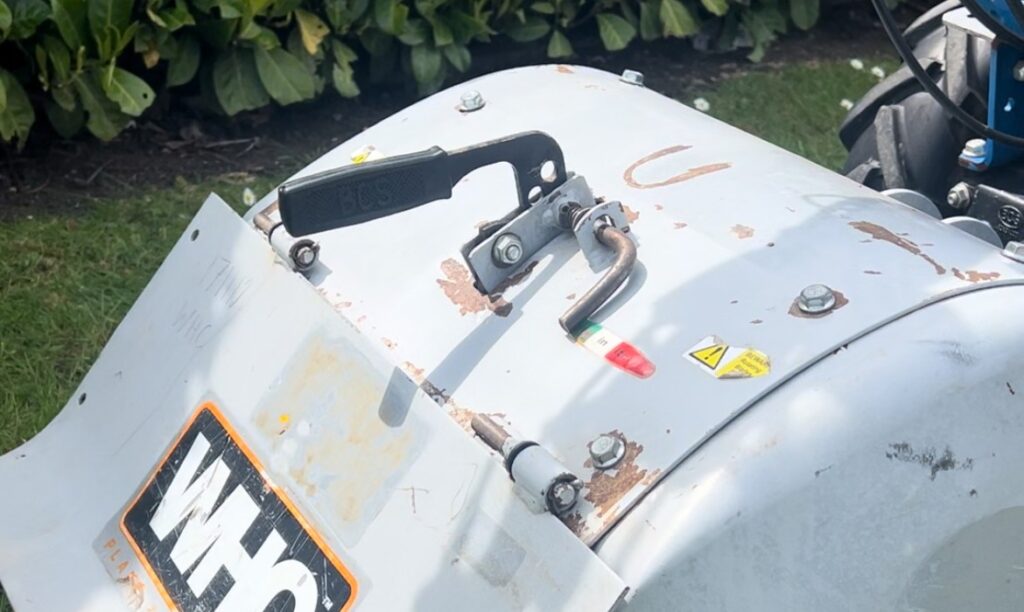
The depth adjustment allows you to set the correct cultivating height for your task. This can be highly beneficial when it comes to tackling more dense soils.
Operator’s handlebars
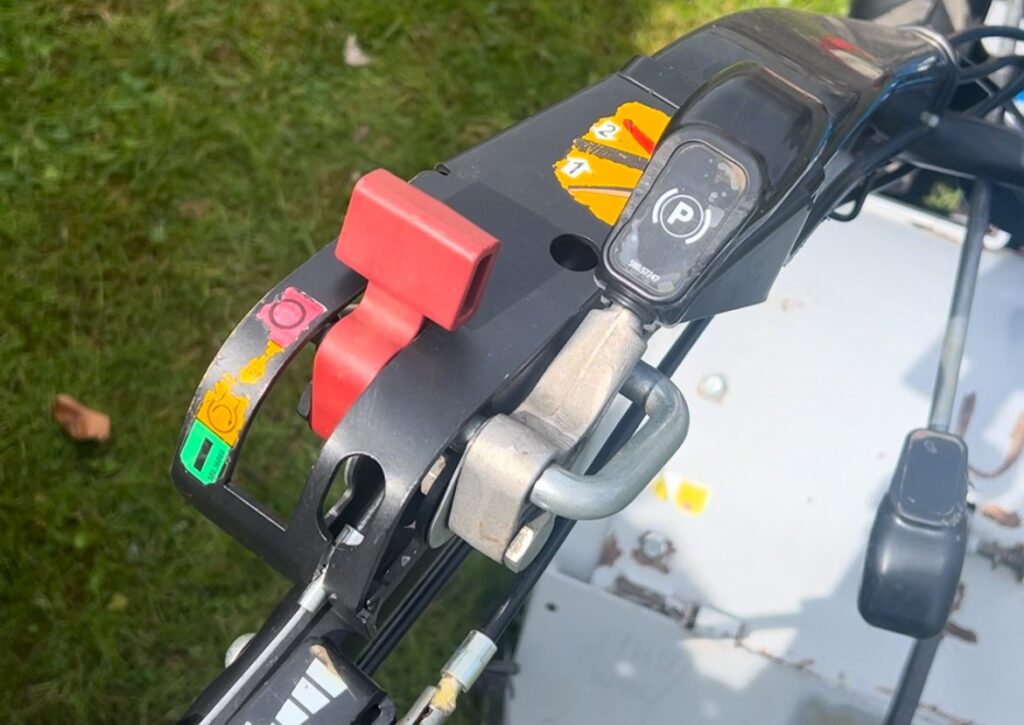
The operator’s handlebars house the on/off lever, park brake, safety switch and clutch. They are also adjustable so that you can walk alongside the machine as it moves forward. Resulting in the avoidance of re-compacting cultivated soil.
Gear levers
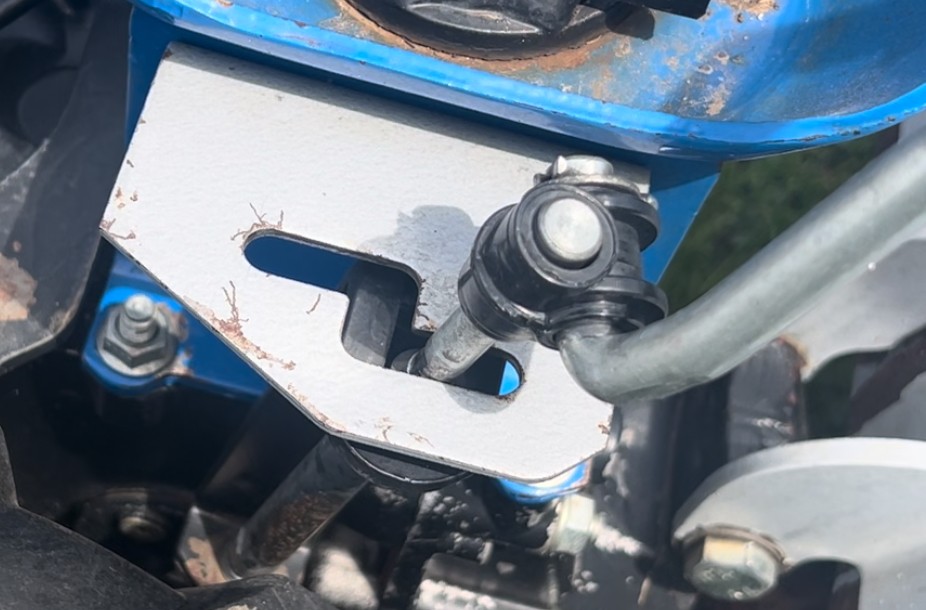
The gear levers are used to engage the front and reverse motions. These work in tandem with the clutch lever which you will find on your operator’s handlebars.
Driven wheels

The final component is the driven wheels of the soil rotovator. These are powered by the machine’s engine when in gear. They offer a huge amount of traction with their deep-tread designs.
After gaining insights into the various components of a soil rotovator, let’s delve deeper into the reasons why you may consider renting one.
Why hire a soil rotovator
Hiring a soil rotovator can have many benefits for a range of gardening tasks. Here are some examples of where these machines are the best fit.
Soil preparation
Soil rotovators are a highly efficient method of breaking up compacted soil efficiently and without much effort. Overall, this makes it far easier to prepare your ground for the next part of your task. Additionally, a rotovator can help create a uniform texture throughout a planting area. Which will result in better germination and root growth.
Planting
Using a soil rotovator can aid in preparing an ideal seed bed. Loose, aerated soil allows seeds to be established more easily. Tilling soil with a rotovator also helps mix existing nutrients throughout the soil, ensuring plants can grow healthy.
Aerating
Aerating is a task that is easily achieved with a soil rotovator. The process introduces oxygen to the soil profile which is vital for root respiration and development. Additionally, this process reduces the overall amount of compaction, allowing roots to grow downward faster and easier.
Levelling
Soil rotovators can also be used to level garden beds or new lawn spaces. The process allows large clumps of compacted soil to be broken up to be distributed throughout the levelling process. Levelling areas with a machine like this reduces the amount of erosion, as water can infiltrate the soil more evenly.
Mixing organic matter
The last most common practice with a soil rotovator is to mix organic matter into your working area. Compost, manure, and mulch can be easily mixed into the existing surface by using a rotovator. This helps to improve soil structure, fertility, and moisture retention.
As we’ve highlighted, there are many benefits to choosing a soil rotovator for your garden project. This type of equipment can make light work of improving your soil quality, aiding in levelling ground, preparing for planting, and encouraging the growth of newly planted seedlings.
Most common questions about soil rotovators?
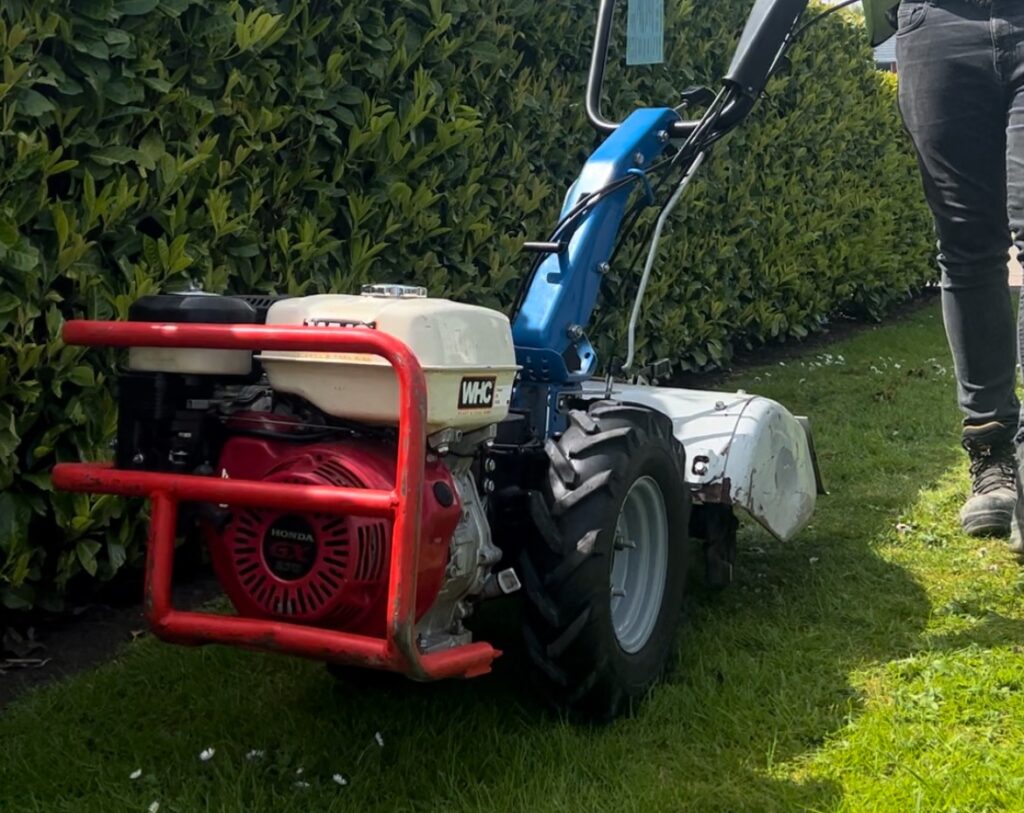
Soil rotovators are extremely popular pieces of equipment used between the Spring and Autumn months in the UK. If you are thinking that this type of equipment is potentially suitable for your gardening task, then there is no doubt you might have some questions. Therefore, we have compiled the most common questions that we have received in the 25-plus years of supplying equipment like this.
- How does a soil rotovator work?
- What types of soil rotovators are available to hire?
- How much does it cost to hire a soil rotovator?
- Are there any safety considerations when using a soil rotovator?
- What are the benefits compared to other soil preparation methods?
- What do I need to hire a soil rotovator?
- How do I find a reputable soil rotovator rental company?
How does a soil rotovator work?
Soil rotovators are a piece of garden equipment that is designed to reduce compaction and aerate soil in gardening projects. They work through their petrol-powered engine driving the machine’s rotatory blades under the surface, to churn and break up all types of soil structures. In some designs, their machine’s engines also power the forward and reverse gears. All of which is controlled by the handlebars or levers behind the machine.
What types of soil rotovators are available to hire?
The most common type of machine to hire is an 8HP rotovator. This design is the most common available machine that you can acquire from most garden tool hire suppliers. These tools are not suitable for lifting, as they weigh around 90kg. Therefore, we would highly recommend you speak to a supplier to discuss delivery options.
How much does it cost to hire a soil rotovator?
The cost to hire a soil rotovator depends entirely on the supplier you choose. Nevertheless, most will offer a range of different hire period lengths such as 24-hours, weekend, 3 days and week-hire rates. This means that you will have the flexibility to have the equipment for the period that best suits your budget. For the most up-to-date costs, including delivery (if required), you should speak to your local supplier directly for a quote.
Are there any safety considerations when using a soil rotovator
Like with all garden machinery, you should always take great care in protecting yourself when using equipment like a soil rotovator. Safety boots, eye protection, ear protection and gloves are highly recommended whilst using this equipment. You should be aware that whilst the blades are engaged, there is always a low-risk chance of flying debris. If you are ever unsure, you should always consult your supplier.
What are the benefits compared to other soil preparation methods?
Rotovators offer a fast and efficient solution to other alternative soil preparation methods. Digging by hand can be very labour-intensive, whereas a rotovator takes almost all the effort out of the task. Additionally, using one will provide you with a more accurate result, which in turn, will improve your surface more evenly.
What do I need to hire a soil rotovator?
Hiring a soil rotovator will first require you to find a supplier that you feel is the right fit for you. Most UK tool hire providers will require a form of identification, (passport, driver’s licence, etc), and proof of address, (bank statement or utility bill) to hire. This is accompanied by a security deposit, which is returned to you once you’ve finished. Nevertheless, it is important to always check your prospect’s requirements beforehand. Payment for the equipment is taken once the machinery is returned to your provider. This may include fuel charges if not refuelled.
How do I find a reputable soil rotovator rental company?
One of the most time-consuming tasks is finding a reputable soil rotovator rental company. You should always consider factors such as the age of the equipment, availability, cost, reliability, support and flexibility when selecting your prospect. One of the fastest ways to gain trust with a tool hire company is to obtain previous customer feedback. You can do this easier than ever online on all the major review platforms such as Google, Trustpilot, etc. Most tool hire providers will be open to showing you the equipment first-hand before you even commit. For more information on this check out our resource “How to choose the right equipment hire company near me?”
So these are the most common questions you are likely to have when looking to hire a soil rotovator. Nevertheless, if you have any further queries, we’d love to help you. Feel free to submit your questions to hire@whchire.com and we’ll provide you with the transparency you need to make the right decision for you.
Factor to consider when hiring a soil rotovator
Opting to use a soil rotovator for your gardening project will boost your efficiency and productivity when it comes to preparing ground. However, to ensure that you make the best decision for your project, we would highly recommend that you take the following considerations into account, to ensure that these machines are the best fit for your task.
Size and power requirements
Ensuring you have enough power for the task at hand is essential to avoid injuring yourself or damaging the equipment. Most small-medium garden-sized projects can be conquered with an 8HP Rotovator. However, larger tasks may require the use of a compact tractor with a rotovator attachment. Finding the right balance is essential. If you are ever unsure, you should consult with a tool hire specialist.
Soil type and condition
Your soil type and condition can have a large effect on the time it requires to reach your desired outcome. Some soil types will require multiple passes to achieve a well-aerated and structured texture. Additionally, more compact surfaces must be rotated layer by layer to avoid damaging the equipment. To improve soil structure, you may wish to mix in further organic matter.
Depth and width of tilling
The next consideration is the depth and width of the tilling. 8HP rotovators will reach a depth of 230mm which is adequate for most garden-sized renovations. It is worth noting the machines’ tilling width to establish a rough timescale you may require the equipment. These machines offer a cutting width of 500mm. However, if you are dealing with a larger space, you may wish to consider a rotovator attachment on a compact tractor.
Rental duration and cost
The duration and cost of hiring a soil rotovator are vital to keeping to a budget. The longer you hire the machinery, the more cost it will incur. The beauty of garden rotovators is that they are generally very inexpensive machines to hire. Nevertheless, you should consider this factor to ensure you never need to overspend. Working closely with your provider can enable you to find the most suitable solution available.
Availability of maintenance and support
The next factor to consider is the availability of maintenance and support a provider will offer. Not all rental companies will offer the same service, therefore, it is essential to uncover what you receive for your investment. The quality and maintenance standards of the equipment are usually very apparent. However, you should feel confident enough to assess the machinery yourself before committing to any hire contract. Poorly maintained equipment can lead to breakdowns and delays with your task. Therefore, it is best to always do your homework beforehand.
Transportation
This factor is one that many may initially overlook. Not all garden soil rotovators are suitable for transporting in a hatchback car. An 8HP rotovator weighs 90kg and is unsuitable for lifting. Nevertheless, these tools can be transported in a small van or on the rear of a towable trailer. It is crucial to assess how you are going to safely transport the equipment to your destination to avoid any delays. Obtaining the equipment’s specifications can make a huge difference in your decision-making process.
Conclusion
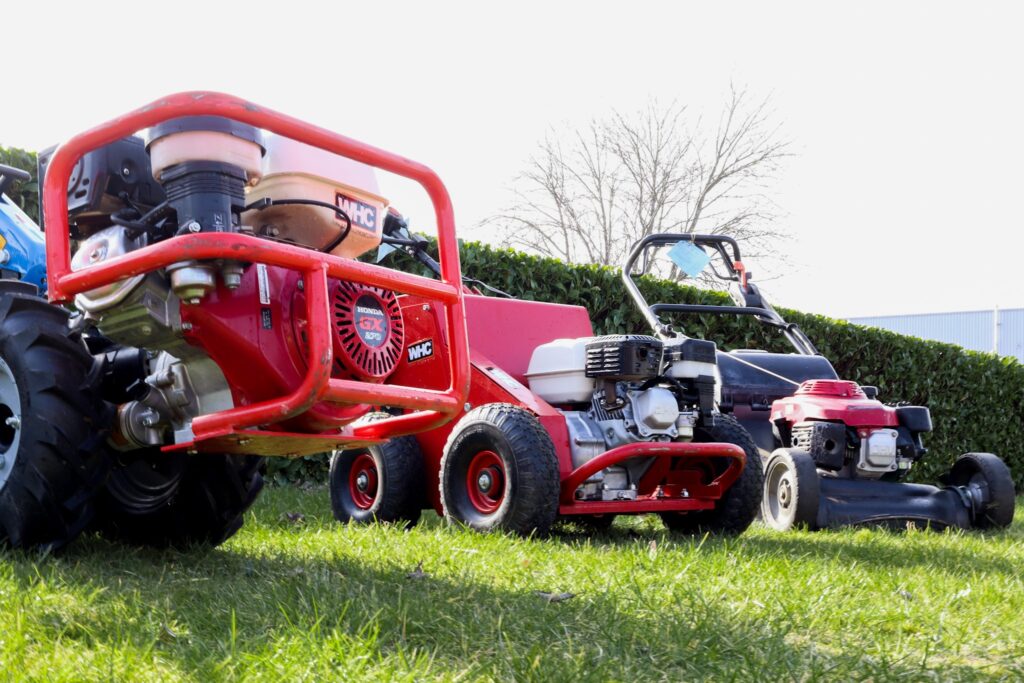
As we’ve explored the various benefits of using a soil rotovator for projects such as soil preparation, planting, aerating, levelling, and mixing organic matter, it’s clear that this versatile tool can be a game-changer for your gardening, landscaping, or agricultural endeavours.
Whether you’re a seasoned gardener or a first-time landscaper, incorporating a rotovator into your toolkit can make a significant difference in the success of your projects.
Ready to Experience the Benefits of a Soil Rotovator? If you’re considering hiring a soil rotovator for your next project, look no further than WHC Hire Services. With our top-quality rotovators and expert advice, we’re here to help you tackle any soil preparation task with confidence. Contact us today on 01684377977 to discuss your needs and schedule your rotovator hire.

